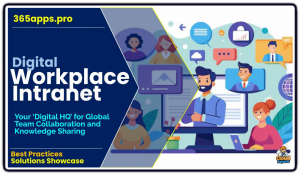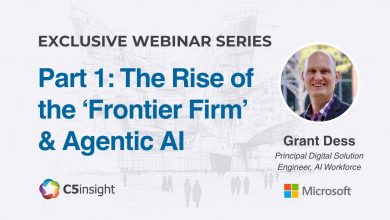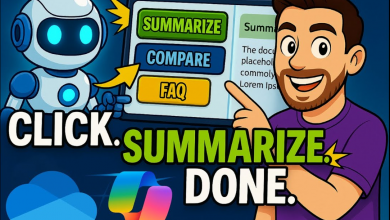 ‘Intranet AI’ refers to AI deployed within private enterprise intranets, email systems, and internal collaboration platforms to enhance staff productivity.
‘Intranet AI’ refers to AI deployed within private enterprise intranets, email systems, and internal collaboration platforms to enhance staff productivity.
These AI solutions are tightly integrated with an organization’s internal digital infrastructure—such as document repositories, databases, communication tools, and enterprise software—allowing employees to interact with AI agents through natural language or contextual interfaces.
Defined as the shared capacity for problem-solving, decision-making, and creative output across teams, this effect can amplify human potential, optimize operational efficiency, and create a smarter, more cohesive workforce.
Augmenting Human Intellect
In his seminal 1962 article, “Augmenting Human Intellect: A Conceptual Framework,” Douglas Engelbart introduced the visionary concept of the “Augmented Enterprise”—an organization where human intelligence is enhanced through tools and systems designed to amplify cognitive capabilities.
Engelbart envisioned a symbiotic relationship between humans and technology, where tools evolve to extend our problem-solving capacity, streamline complex processes, and foster collective intellectual growth.
Rather than replacing human effort, these tools amplify it, mirroring Engelbart’s emphasis on augmentation over automation. Today, the integration of AI into desktop applications represents a tangible realization of this vision, raising the “collective IQ” of organizations by aligning with Engelbart’s principles of augmentation.
Intranet AI – Amplifying Individual Intelligence
The first step in elevating an organization’s collective IQ lies in enhancing the capabilities of its individual contributors. AI in desktop apps achieves this by reducing cognitive load and enabling employees to focus on higher-order thinking. Routine tasks—such as data entry, scheduling, or formatting—are handled seamlessly by AI, freeing up mental bandwidth for creativity and strategic problem-solving.
This genre of technology can be described as ‘Intranet AI’, referring to a category of artificial intelligence technologies deployed within private enterprise intranets, email systems, and internal collaboration platforms to enhance staff productivity, streamline workflows, and enable data-driven decision-making.
An AI-powered intranet is a digital workplace platform that integrates AI technologies to enhance functionality and user experience. Unlike traditional intranets, which primarily serve as static repositories for documents and announcements, AI-driven intranets dynamically adapt to user needs.
Built on robust platforms like Microsoft 365, these systems use AI tools such as natural language processing (NLP), machine learning (ML), and predictive analytics to deliver personalized content, automate tasks, and provide actionable insights.
For example, Microsoft 365 integrates AI through tools like Copilot, Azure AI, and Microsoft Graph, enabling intranets to understand employee behavior, anticipate needs, and facilitate seamless collaboration. These platforms go beyond basic file storage, offering features like real-time document collaboration, automated workflows, and intelligent search capabilities, making them indispensable for modern organizations.
Sharepoint AI Agents
SharePoint agents are like smart, AI-powered assistants built into SharePoint, Microsoft’s tool for storing, sharing, and managing documents and sites.
Think of them as helpful guides that can answer questions, summarize files, or find information for you—all using natural language, like chatting with a friend. They’re powered by the same technology behind Microsoft 365 Copilot, which means they’re designed to make your work easier by understanding and processing the content you already have in SharePoint.
Every SharePoint site comes with a basic, ready-made agent that’s automatically set up to work with the content on that site. But if you have permission to edit a site, you can also create custom agents tailored to specific tasks—like summarizing reports or pulling key details from a document library.



